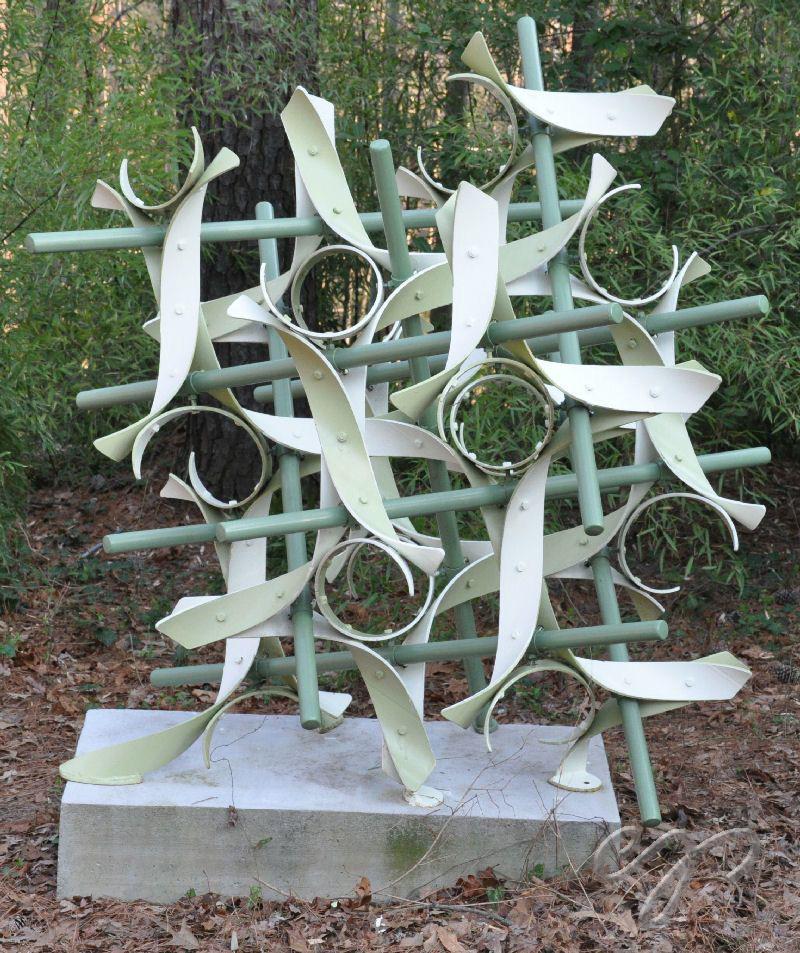
Symmetry here and there
All of these photos were taken in 2022, for the upcoming The Magic Theorem of the Symmetries of Things, a second edition of the first part of the book, with expanded exercises and examples, in

All of these photos were taken in 2022, for the upcoming The Magic Theorem of the Symmetries of Things, a second edition of the first part of the book, with expanded exercises and examples, in

All of these groovy pix use maps from the plane to itself, taking a periodic pattern into the plane in a distorted way. Don’t stare into the middle for too long…

“Double Triamond, w/ Hexastix!” created in collaboration with Eugene Sargent, was assembled at the eighth Gathering for Gardner, at Tom Rodgers’ and Sarah Garvin’s beautiful Japanese style gardens and home in Atlanta in 2008. The

The trilobite and cross tiles clearly generalize to higher dimensions. Though a simpler method soon appeared”Threelobites” were a first early graphic / mathematical exploration. Here’s a nice pic of a tiling by the trilobite and

Through a local self-assembly rule these tiles are forced to form arbitrarily large patches of Robinson tilings, with some extra markings that are used to manage the process. In the animation, at each green dot,

I was curious about the actual algorithm for geometrizing an orbifold — it’s only lightly sketched at in Thurston’s Three Dimensional Topology and Geometry. Hence the app. The details are now inside some javascript: Check

C&! is a wonderful math camp for young mathematicians and their families. Here are some t-shirt designs I’ve designed for them. This year’s remains a secret for a few more weeks!

Tamara Muzner has posted many of the videos that were made at the Geometry Center, where I spent the first eight months of 1995. That was a remarkable time, with powerful new methods for sculpting

Dodecafoam is a fractal quasicrystalline space-filling froth of dodecahedra which I’ve played with since 1988 in one form or another, and undoubtedly will post more about (check out the dodecafoam tag, or the dodecafoam kits